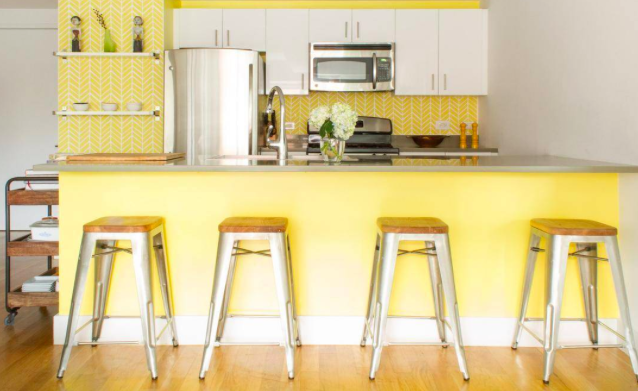
Designing your kitchen well can be a challenge, especially when you’re trying to balance aesthetics, utility and a budget. For practical, actionable tips, we caught up with Orlando Soria, the west coast creative director of Homepolish: a rent-an-interior-designer service that pairs clients with pros for individual consultations.
In our interview, Soria gives us his take on what to ditch, what to keep and where to stow all those rooster knick-knacks when considering the most sacred place in your home: the kitchen.
Edible Brooklyn: How do you approach a new project?
Orlando Soria: I approach a new project by spending time with the client in their space, asking them a ton of questions about how they use it, and trying to glean as much information as I can about their needs. The primary job of a designer is to make a space work for their client, so the start of a new project is really an opportunity to listen and find out exactly what your client wants so you can best execute it.
EB: How do you balance your aesthetic with a customer’s preferences?
OS: I’ll always have aesthetics on the mind, but obviously how the client uses their space on a daily basis is of utmost importance. Good design is design that makes people happy, so ultimately if I have to sacrifice a bit of visual perfection for a practicality that is going benefit my client’s daily activities, I’m going to do it. That being said, happiness also comes from being in a beautiful and orderly home, so I will also gently nudge my client to consider being open minded about adapting their preferences to achieve a more beautiful home.
EB: What are the non-negotiables when working on a kitchen remodel?
OS: Appliances can make or break a kitchen, so it’s important to choose elegant, attractive ones that don’t bring down its look. In a sense, the range, dishwasher and refrigerator are furniture for the kitchen, so they should be chosen with a tremendous amount of care. And if you’re a cook, having a full-scale professional range and an adequately sized fridge is obviously going to be important.
https://www.instagram.com/p/BDgEL7qg5Ow/
EB: Our readers are mainly living in smaller, New York apartments. How can they make sure to have a fully equipped space?
OS: As someone who’s lived in tiny apartments in both New York and Los Angeles, I know what it’s like to be an avid cook with a tiny kitchen. One of the great things about this is that it makes you really thoughtful about editing. Meaning if you have mixing bowls, you probably only have space for one set so you should choose wisely and buy a gorgeous set you love. In smaller kitchens, having attractive cooking equipment that can be displayed on open shelving or hanging on the wall allows you to cram as much into your kitchen is possible without destroying its look.
EB: Any tips for maximizing space?
OS: One trick I’ve learned is to add sliding shelf organizers that allow you to put things deep into cabinets without losing access to them. You can really go crazy in the shelf organizing section of a hardware store. I’ve also learned the necessity of storing rarely-used items out of the prime kitchen storage space. For example, if you have a pasta maker but rarely use it, stow it along with your other rarely used kitchen supplies in a hall closet. This will free up your kitchen cabinets for all the stuff you use on a daily basis.
EB: Form versus function: thoughts?
OS: If you’re a cook, your kitchen should be pretty minimal. The idea is to create a simple backdrop for the delicious food you will be making. I like to add personality to a kitchen by adding small details. Maybe it’s a beautiful ceramic bowl or a large-scale piece of art on the wall. I prefer bringing in the personality with art and objects rather than try too hard to give the space a ton of pattern and color.
https://www.instagram.com/p/BDIyKU9A5JA/
EB: Generally speaking, what are some things that good kitchen design avoids?
OS: I would avoid mixing too many different types of countertop finishes in one space (like combining Caesarstone, stainless steel, wood, marble, etc). I’ve seen this in a lot of kitchens and it makes the whole place look disjointed. I’d also avoid going too dark or earthy with tile color. A lot of foods you’ll be preparing will be in the beige/brown/earthtone range, so there is little contrast when the entire kitchen already has that earthy color palette.
Keeping all your appliances off the countertop is a must. While this may seem like the most convenient way to keep everything at arm’s length, it cuts down on counter space and make the space seem visually chaotic. I’d also avoid too many quirky accessories. Kitchens are often filled with little rooster sculptures and pig-waiter-pizza-guy figurines. While these types of decor accents can be cute, they also clutter a space and make it look like a playroom rather than a kitchen.



